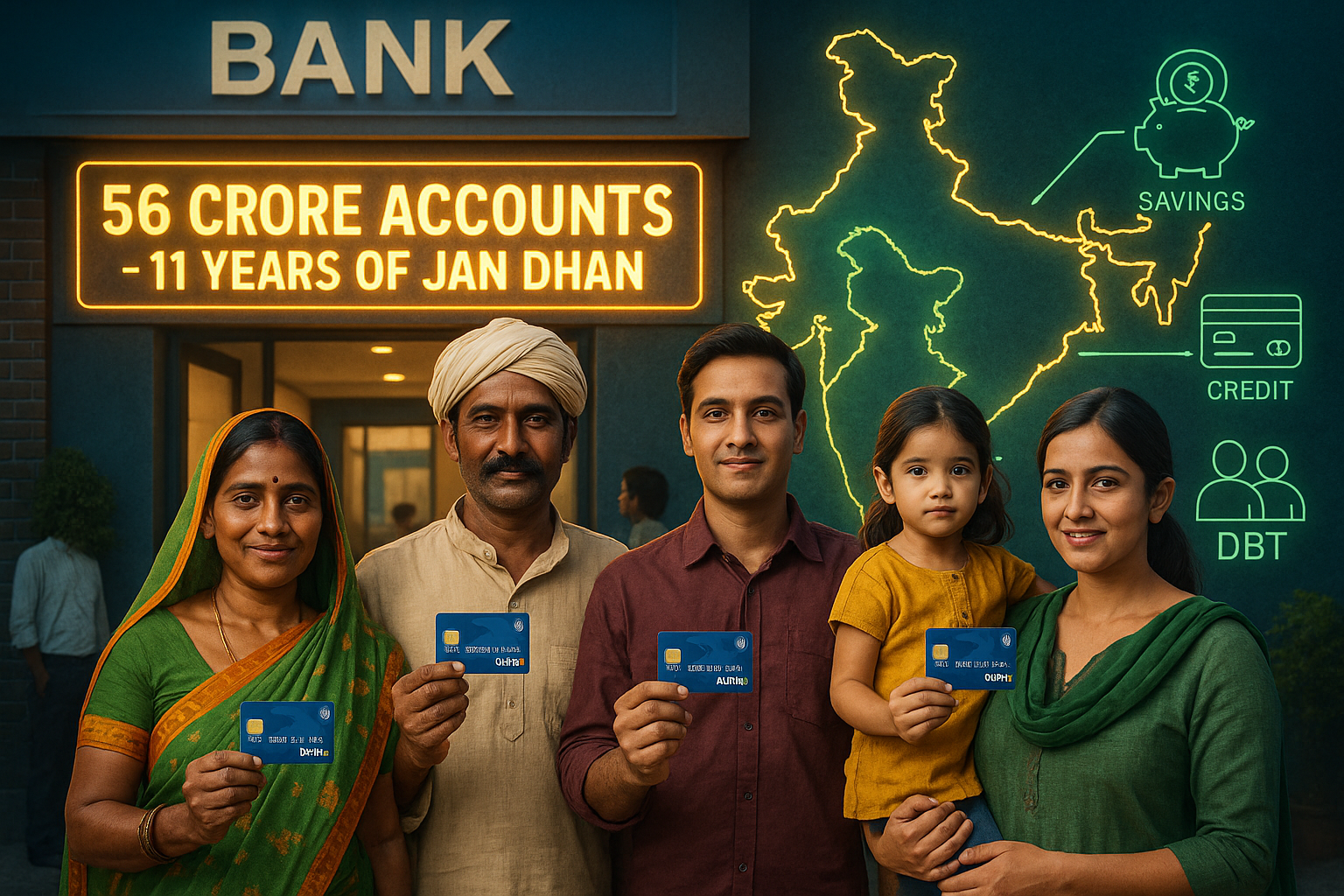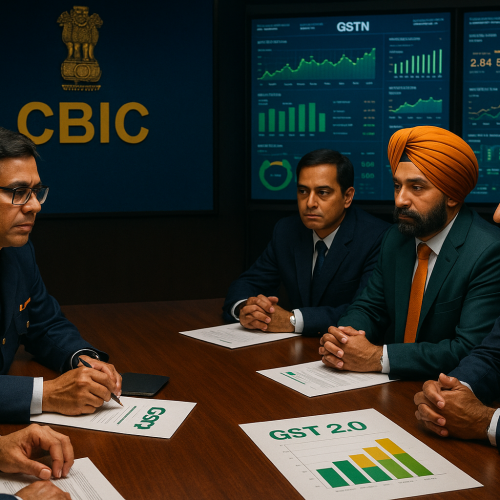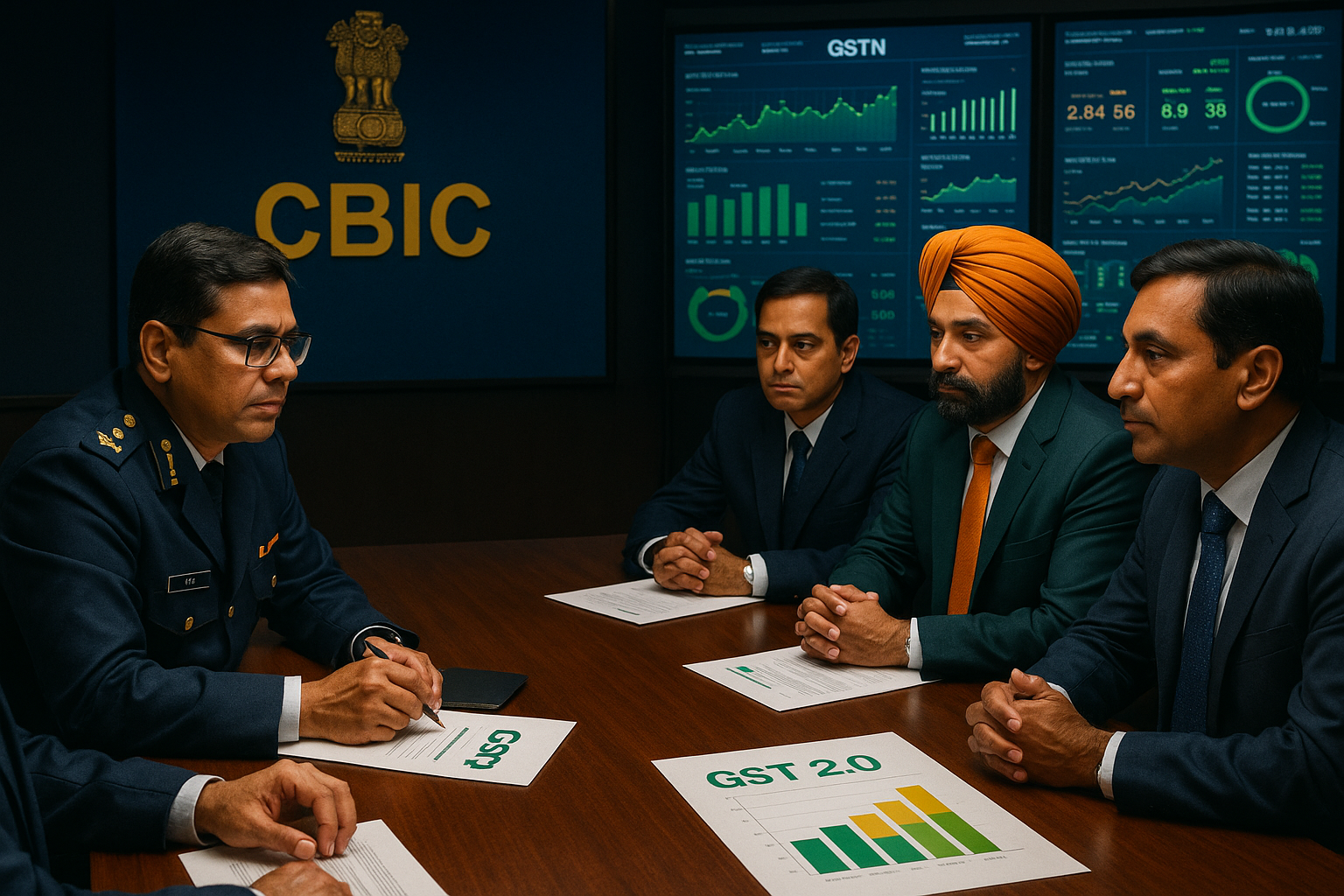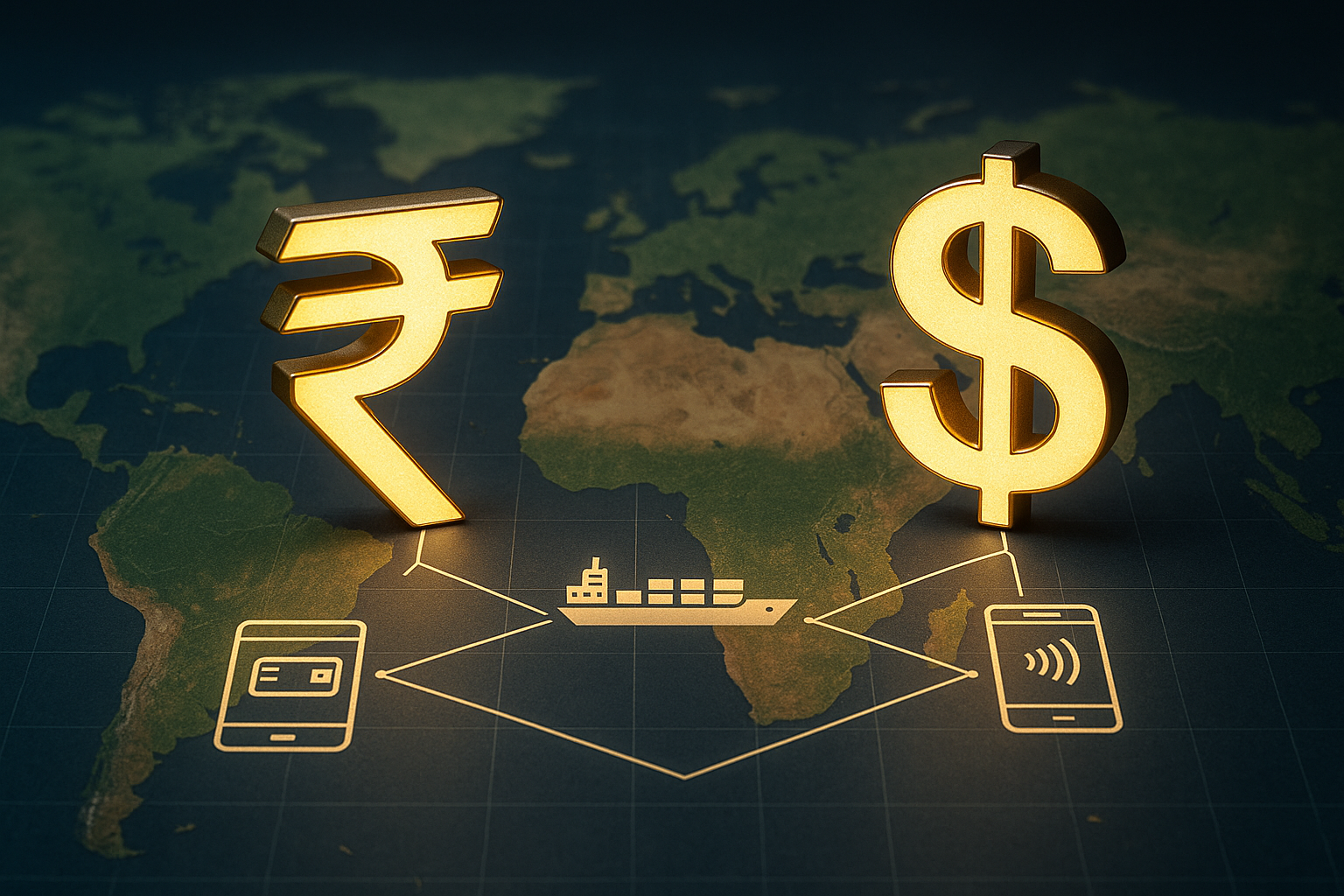Finance Minister Nirmala Sitharaman announced that more than 56 crore Jan Dhan accounts have been opened in the past 11 years under the Pradhan Mantri Jan Dhan Yojana (PMJDY). The milestone highlights India’s unprecedented progress in financial inclusion, bringing millions of households into the formal banking system and providing access to credit, insurance, and digital payments.
The achievement underscores how PMJDY has become a cornerstone of India’s financial empowerment strategy, particularly for the poor, women, and rural populations.
The Journey of Jan Dhan Yojana
Launched in 2014, PMJDY was designed to ensure that every household had access to at least one bank account. Over the years, it has evolved into a comprehensive financial inclusion program, providing not just banking access but also RuPay debit cards, overdraft facilities, insurance, and direct benefit transfers (DBT).
The scheme’s success is evident in the fact that India today has one of the largest financial inclusion networks in the world, powered by Jan Dhan accounts.
Key Drivers of Growth
Several factors have contributed to the rapid expansion of Jan Dhan accounts:
Digital Push: Aadhaar-linked accounts and mobile banking have simplified onboarding.
Government Transfers: DBT for subsidies and welfare schemes encouraged mass participation.
Women Empowerment: Over 55% of Jan Dhan account holders are women, highlighting gender inclusivity.
This integration of banking with welfare delivery has made the scheme both popular and sustainable.
Economic and Social Impact
The impact of Jan Dhan Yojana extends beyond banking. By connecting millions of low-income families to the financial system, the program has:
Reduced dependence on informal moneylenders.
Enhanced financial literacy and savings habits.
Enabled better targeting of welfare benefits.
For banks, Jan Dhan has expanded their customer base while aligning with the government’s financial empowerment vision.
Why This Matters
The scale of Jan Dhan accounts demonstrates India’s progress in bridging the gap between the unbanked and the formal economy.
For Citizens: Access to banking, savings, and financial security.
For Policymakers: A model for inclusive development and direct welfare delivery.
For the Economy: Strengthens savings culture, credit expansion, and digital adoption.
As India marches toward its Viksit Bharat 2047 vision, Jan Dhan remains a cornerstone of inclusive growth.












